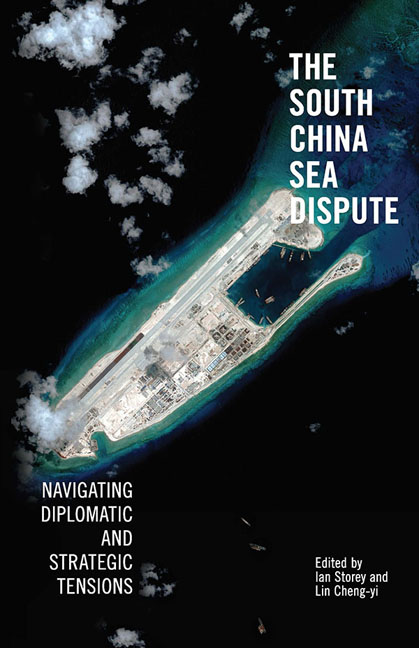Book contents
- Frontmatter
- Contents
- About the Contributors
- 1 Introduction
- 2 Untangling a Complex Web: Understanding Competing Maritime Claims in the South China Sea
- 3 China Debates the South China Sea Dispute
- 4 Taiwan's Evolving Policy towards the South China Sea Dispute, 1992–2016
- 5 The South China Sea: Primary Contradictions in China–Southeast Asia Relations
- 6 Rising Tensions in the South China Sea: Southeast Asian Responses
- 7 The Philippines and the South China Sea Dispute: Security Interests and Perspectives
- 8 A Vietnamese Perspective on the South China Sea Dispute
- 9 The South China Sea Dispute: Options for Malaysia
- 10 The United States and the South China Sea: Front Line of 228 Hegemonic Tension?
- 11 The South China Sea Dispute in U.S.–ASEAN Relations
- 12 Japan and the South China Sea Dispute: A Stakeholder's Perspective
- 13 Conclusion
- Index
7 - The Philippines and the South China Sea Dispute: Security Interests and Perspectives
Published online by Cambridge University Press: 19 May 2017
- Frontmatter
- Contents
- About the Contributors
- 1 Introduction
- 2 Untangling a Complex Web: Understanding Competing Maritime Claims in the South China Sea
- 3 China Debates the South China Sea Dispute
- 4 Taiwan's Evolving Policy towards the South China Sea Dispute, 1992–2016
- 5 The South China Sea: Primary Contradictions in China–Southeast Asia Relations
- 6 Rising Tensions in the South China Sea: Southeast Asian Responses
- 7 The Philippines and the South China Sea Dispute: Security Interests and Perspectives
- 8 A Vietnamese Perspective on the South China Sea Dispute
- 9 The South China Sea Dispute: Options for Malaysia
- 10 The United States and the South China Sea: Front Line of 228 Hegemonic Tension?
- 11 The South China Sea Dispute in U.S.–ASEAN Relations
- 12 Japan and the South China Sea Dispute: A Stakeholder's Perspective
- 13 Conclusion
- Index
Summary
The geographic configuration of the Philippines — a mid-ocean archipelago consisting of over 7,100 islands and its strategic location at the crossroads of major waterways including the Pacific Ocean, Celebes Sea and South China Sea, make it the quintessential coastal state. Only a few towns or cities in the country are more than 100 km from the coast; 78 per cent of its provinces and 54 per cent of municipalities, almost all major cities and 62 per cent of the population are considered coastal. International navigation straits crisscross the country, including the Babuyan and Balintang Channels, and the Luzon, San Bernardino, Mindoro, Surigao and Balabac Straits. Shipping provides the major means of linking the islands and facilitating movement of domestic goods and people. Moreover, the country's long maritime tradition is reflected in the fact that one out of every four registered workers on the world's oceangoing vessels is a Filipino and that today, the Philippines hosts the world's fourth biggest shipbuilding industry (after China, South Korea and Japan).
The critical importance of the maritime environment on the Philippines’ national identity and sense of vulnerability was evident throughout the decades-long negotiations for the United Nations Convention on the Law of the Sea (UNCLOS), when the near exclusive goal of the Philippines was to obtain recognition by other countries of its unique need to exercise sovereignty over the waters connecting the islands in much the same way as it would over its terrestrial domains. Today this “archipelagic doctrine” is enshrined in Part IV of UNCLOS. The Philippines was among the first countries to sign and ratify UNCLOS, though it was not until 2009 that its provisions could be actively implemented following the passage of an amended archipelagic baselines law.
As one of the South China Sea littoral states, the Philippines has long-standing interests in this maritime space, and the islands, waters and resources of the sea that are closest to the country's main archipelago. The South China Sea is vitally important in providing the Philippines with security against external threats, in light of its long irregular coastlines (altogether longer than that of the United States) and the resultant vulnerability to intrusions or attacks.
- Type
- Chapter
- Information
- The South China Sea DisputeNavigating Diplomatic and Strategic Tensions, pp. 161 - 185Publisher: ISEAS–Yusof Ishak InstitutePrint publication year: 2016

